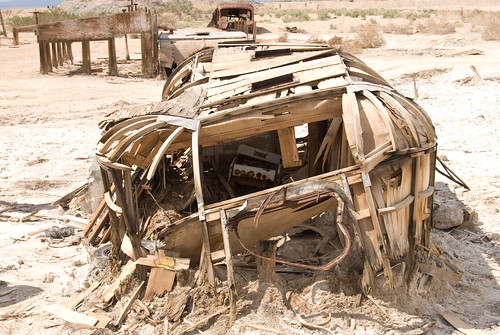Amy and I have started an ad-hoc young adult literature book club. The first book that we read was Nothing But the Truth by Avi. I thought it would be cool to conclude our discussion by posting a book review to Amazon but my notebook ran out of power before we could, so here’s my thoughts now.
I didn’t read Nothing But the Truth when I was young, but upon finishing it, I remembered that my brother, an avid reader, and a particular lover of books by Avi, had really liked it when he was young. He was especially drawn to the tragic irony of the books conclusion. I read other reviews of the book on Amazon and was struck by how the praise or criticism of the book seemed to be broken along lines of age, with older readers liking the book, and many of the 1-star reviews coming from younger readers. One of the principal events in the book is the conflict of Phillip, the young protagonist and his English teacher and foil, Miss Narwin, over the book Call of the Wild, which Narwin regards as a classic of literature and Phillip regards dismissively. It’s funny to think that the same difference of perspective might happen over this book.
Reading the book as an adult, I really enjoyed it. Though the events in the book snowball quickly out of the control, and the documentary style of the book, as the story is told through a series of memos, journal entries, personal letters, newspaper articles, and transcriptions of conversations, seems to quicken the pace and show only certain faces of the characters, the story is not without nuance and the bluntness of some of the perspectives accurately capture the dangerously singular vision of American politics and the personal political chasms of family and age.
Many other reviews that I read seemed to see the book as offering a very moral conclusion, warning of the destructive consequences of untruthfullness, but I found the story to instead complicate the idea of truth. Truth is a relative concept and one that is heavily wrought by individual’s challenges and investments. I found the inability of the characters to transcend these things to be tragic and sadly real. Most poignent was the relationship between Narwin and Phillip, where neither acted out of particular malice, but both were absolutely unable to understand each other’s perspectives or interpret the signals that each so desperately put forth. This was such a strange perspective, and I think it was one I was never exposed to as a youth. I think I always saw adults as allies or adversaries but never as complex people who were both deeply comitted, empassioned, and concerned but also ultimately impotent. Also sad was the communication between Phillip’s parents and between them and Phillip and the portrayal of parental concern and its interception by adult anxieties and responsibilities. Finally, I found the depiction of school district politics and conservative talk radio very, very real and the imagery that the words evoked was of neighborly chats on the streets of my hometown, my mother’s frustrated stories of her navigation of school administrators, and the rantings of local shock jocks.
I want to think that this a very good book for youth to read, that the criticism of media, and, more importantly, the complication of how we perceive the words and actions of others, would be transformative. Still, in thinking about this book, I begin to realize how much my finding of these things in this book comes from the experience and vision that has seperated me from the age of the book’s young protagonist. Finding the truth about yourself, let alone in the world, is a constant and daunting task. I hope that education can help equip young people to see the truth in their investments, beliefs, and ultimate actions, for their own well-being; to see others as both good and flawed, as that is so essential to an empathetic humanity; and to distill some more fundamental truth from the ever-volitile flow of “truths” in media and poltics. Still, as this book argues, it is the challenge of educators to perform such alchemy in a venue so loaded by these forces. Perhaps this book can be a device towards such ends.
